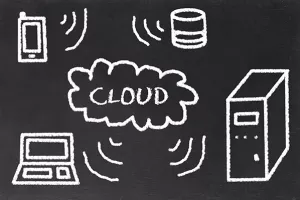In early February, ransomware brought Central Piedmont Community College, a 50,000 student college in North Carolina, to a standstill. The attacks disabled systems ranging from phone and email all the way to productivity apps and online learning tools. Although the college resumed classes a few days after the initial attack, it’s unclear whether data in some of their systems will ever be recoverable. No personal data was stolen, but shutting down classes for a few days was a huge blow to students and staff. And it’s likely faculty will need to rebuild curricula, which can be a massive undertaking. But most of these issues could have been avoided if the university had a more sophisticated data protection strategy in place. With that in mind, let’s look at a few ways schools can protect themselves using the latest in cloud data protection.
Store Backups Locally and in the Cloud

Make Sure You Have Cloud Recovery Options
It took Central Piedmont's IT people days to get systems back online and they’re still unsure how much of their data will be fully recoverable. Did they have an action plan to follow after they discovered the ransomware intrusion? It’s unclear. But had they backed up data to a recovery cloud, many of their systems could have been back online in just a few minutes rather than a few days. So, as you look at beefing up your data protection capabilities, don’t forget about recovery. More sophisticated platforms let you failover to a virtual version of your entire network in just a few clicks.
Back Up Your Productivity Tools
Many universities use tools like Microsoft 365 and Google Workspace for document creation and data storage. Many admins assume that, because it's housed by a big-name vendor the information generated is safe, but that may not always be the case. Rather than completely relying on your vendor, you should consider backing up any data created on these platforms to a secondary location. So, should users need something they accidentally deleted from months ago, your backup will be ready and waiting.
Conclusion
More than 1600 schools were targeted for ransomware attacks in 2020. The question isn’t if you’ll encounter ransomware, it’s when. Schools must be vigilant. Kandi Deitemeyer, the president of Central Piedmont College, had a helpful message regarding its ransomware attack: “We must remain steadfast in our work as we navigate this event and stay adaptable, resilient, and innovative.” Consider these words as you think about your organization’s data. You too must be adaptable, resilient, and innovative as you implement solutions to reduce your ransomware risk.
Institutions like MIT and Drake University trust StorageCraft for their data protection and management. If you’re looking for a better way to keep education data safe from ransomware, chat with one of our sales engineers to see which solutions are right for your network.
You May Also Like
- Backup and Disaster Recovery Business Continuity Cloud Compliance Data Protection
Protecting Your Microsoft 365 Data With Advanced SaaS Backup and Recovery
March 26th, 2024 - Backup and Disaster Recovery Cloud
What’s the Difference Between SaaS and the Cloud?
March 7th, 2024 - Cloud
Private, Public, Hybrid, or Multi-Cloud: What's the Difference Between Them?
February 20th, 2024